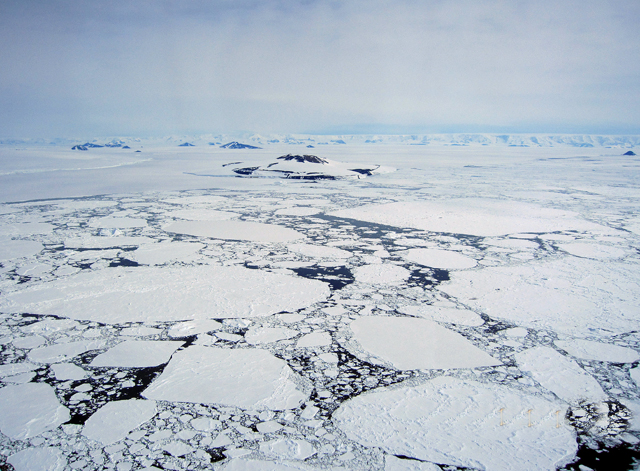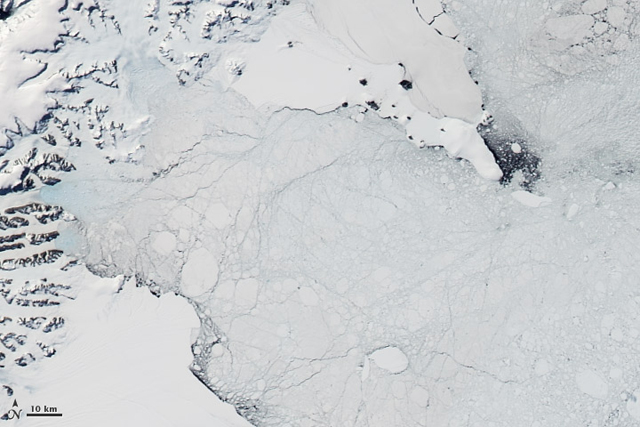|
Page 3/3 - Posted May 28, 2010
DiscoveriesThere were also some scientific surprises along the way — though at least one discovery has potentially troubling implications for the fragile Antarctic ecosystem. A remotely operated vehicle (ROV) brought by a Belgian team for the LARISSA project discovered a large number of invasive crabs moving up from deep water in a 1,500-meter-deep basin off Anvers Island referred to as the Palmer Deep. Domack said that there must have been at least 100,000 crabs, which appear to have stripped the seafloor clean as they climbed to shallower waters made more inviting by climate change. “They’re decimating the Antarctic fauna. They’re an invasive species from Patagonia,” he said. Craig Smith, University of Hawaii “Climate warming in Antarctica is faster than anywhere on the globe,” he told the paper, and abundance of animals might decline as a result of warming, and “unique communities may change. Species may be lost.” The ROV also spied less troublesome critters, like giant marine worms, an octopus, starfish and krill. The ROV, controlled by a three-person team from the Renard Center of Marine Geology at Ghent University “The ROV was great,” Domack said. “We used it in as many situations as we could to resolve interesting problems that presented themselves as we worked through the cruise.” Maria Vernet “Of course, we only had a snapshot in time,” she said. Rocky road, good scienceOne problem the LARISSA team couldn’t solve was the thick pack ice in the Weddell Sea. The Palmer made a second effort to push into the Larsen B Embayment in February but again failed to penetrate to the former location of the ice shelf. Domack said a later review of ice images since 1998, after the Larsen A Ice Shelf broke apart, showed enough open water every year that would have allowed the ship to reach most of its field targets. Only 2010 proved the exception to the rule. “This was truly anomalous sea ice and weather year,” he said. It was in that region five years ago that Domack and colleagues on a previous expedition found extraordinary signs of life on the floor of the continental shelf — bacteria so thick it was visible to the naked eye in what biologists call bacterial mats. The scientists had unexpectedly discovered a cold seep biological community, subsisting not on light, as most ecosystems, but on methane vented through the seafloor. It was there that the researchers had hoped to return with the ROV and other instruments to study the cold seep community and drill into the sediments to learn more about the ice shelf collapse. Domack said a follow-up LARISSA cruise is scheduled for 2012. Some of the unfinished work will be completed, he added, but other studies, such as of the bizarre bacterial mats, may not happen without an ROV. A team of German researchers, who visited the region in 2007, is set to return to the Larsen Embayment next year, Domack noted. “We may just be beaten out of that even though we made the discovery. That’s the way it goes,” he said philosophically. The ship and its crew had one last surprise as they steamed north back to Punta Arenas in Patagonian Chile. One of the world’s most powerful earthquakes had struck the morning of Feb. 27, creating widespread damage in the north of the country, including the gateway airport in Santiago. The Palmer docked at Punta Arenas on March 1. The transportation disruptions stranded the crew and scientists for several more days. Domack lingered for a couple of more weeks to help with the scientific response to the earthquake after an exhausting two months at seas. Despite what he called a “very difficult cruise,” Domack said he was pleased with the overall results, as well as the work ethic of personnel from Raytheon Polar Services Co. “It could have degenerated into a logistical waste of resources, but we were able to put it together, and I think we got some really good science out of it,” he said. NSF-funded research in this story: Eugene Domack, Hamilton College, Award No. 0732467 |



For USAP Participants |
For The Public |
For Researchers and EducatorsContact UsU.S. National Science FoundationOffice of Polar Programs Geosciences Directorate 2415 Eisenhower Avenue, Suite W7100 Alexandria, VA 22314 Sign up for the NSF Office of Polar Programs newsletter and events. Feedback Form |





